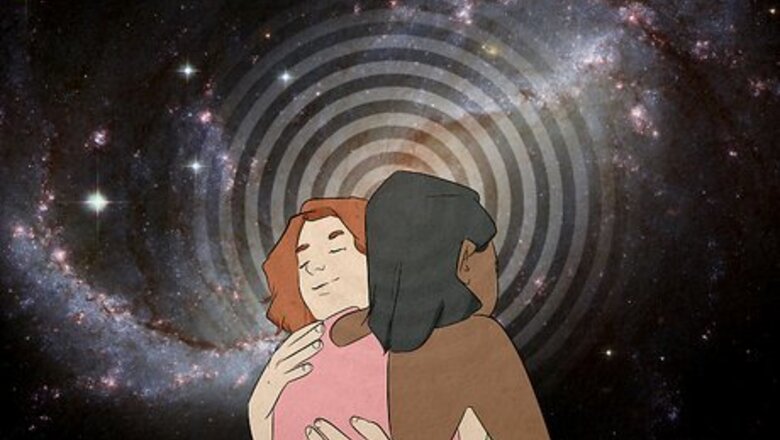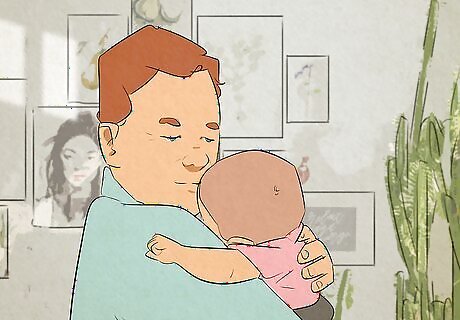
views
- The 12 universal laws are believed to be fundamental and unchanging laws that govern the universe—laws first known and acknowledged by ancient cultures.
- The laws stem from hermetic philosophy in places like ancient Egypt, but ultimately, they’re so old and widespread that it’s hard to trace their exact origins.
- Although they’re not scientifically proven, many people (of varying religions and spiritual beliefs) still use the laws to bring positivity and joy into their lives.
Law of Divine Oneness

The foundational law states that everything is interconnected. The Law of Divine Oneness is considered the “foundational law,” meaning it’s the law that all others build upon. Every action, event, and thought (whether you can sense it or not) is, in some way, connected to everything else in the universe. It may not be obvious how things are connected at times, but awareness of this law is thought to make you stronger and more empathetic. How to use it: Embrace the “oneness” of the universe and practice being compassionate toward other people—especially the ones you don’t entirely understand.
Law of Vibration

Every particle in the universe is in constant movement. According to the law, every particle (from particles making up the planets and stars to everyday objects like your TV or favorite book) is in motion, which means they all carry energy. To that end, everything (including you) has its own specific energy frequency—with high-energy particles being attuned to other high-energy particles and low-energy particles being attuned to other low-energy particles. How to use it: Bring on “good vibes” by elevating your frequency! Doing yoga, chakra work, and sound bathing are all thought to raise your personal frequency.
Law of Correspondence

According to this law, patterns repeat throughout the universe. Relating to the Law of Divine Oneness, Correspondence suggests that your reality reflects whatever is happening inside you and that your life is shaped by the subconscious patterns you repeat every day. Moreover, those patterns are thought to repeat across all spheres of existence. How to use it: Try looking for patterns in your daily life and way of thinking. Is there something you want to change? What do you need to do to make those changes? Once you know the patterns you’d like to change, develop a plan to make those changes. The more you focus on internal healing, the more calm, grounded, and peaceful you’ll feel.
Law of Attraction

Like attracts like according to the Law of Attraction. In other words, you get what you focus on—but you must truly believe that what you’re searching for is possible to attain. Essentially, learning to vibrate at a level that attracts the thing you’re seeking will help you get it. So, for example, if you’re a positive and loving person, you’ll attract more positivity and love into your life. If you’re a negative person, you’ll attract negativity. How to use it: Focus on what you want in your life—not the things you don’t want. Use the law of attraction to work on living more positively and repeating affirmations to help you bring the energy you’re searching for into your life! Remember—it’s important to genuinely believe those affirmations are possible, even if you don’t feel them right away. Repeating an affirmation without believing in it may not create the energy shift you want.
Law of Inspired Action

You must take action and pursue goals to realize them fully. This is very similar to the Law of Attraction, though it pertains directly to your goals and aspirations in life. Essentially, this law reinforces the idea that taking action and making concrete changes will help invite the things you want into your life. It’s internal inspiration that pushes you to chase and work towards your goals actively. How to use it: First, figure out what your goals are. Then, consider what you can do to achieve those goals. Don’t try to arrange a plan right away; simply press pause, reflect, and remain open to all possibilities; you might think of a new course of action that hasn’t occurred to you before! Try keeping track of your efforts, too. It might help to keep a reflection journal and make note of the steps—both big and small—you take to manifest your goals.
Law of Perpetual Transmutation of Energy

Everything is in constant flux, even if the changes are minuscule. Essentially, all things in the universe are always changing, even if it’s just on an energetic level—and because of that, even tiny actions can have big effects. For example, if you’re vibrating at a low frequency and spend time around a happy friend vibrating at a high frequency, your friend’s infectious positivity can also trigger your energy to shift to a higher frequency. How to use it: Find small things you can do daily to bring more positivity into your life, whether that means meditating, keeping a gratitude journal, or simply taking a few minutes to dance around your room when nobody else is watching! For example, expressing gratitude in a journal is an easy way to put yourself in a positive mindset; just make it a daily practice to write down whatever you’re thankful for at the moment.
Law of Cause and Effect

Cause and Effect states that every action has a corresponding reaction. Whatever actions you put into the world (good or bad) will ultimately return to you. “Let's define karma as the law of cause and effect,” explains expert happiness coach Kari Samuels. “Every action you do creates an outcome and effect. One way of reframing karma is to look at it as balance in the universe…how have you tipped the scales of balance in your life.” How to use it: Try being more aware of how your actions affect the people around you (and yourself, of course). When you make decisions from a place of anger or negativity, it’ll eventually take a toll. So, work on embracing your positive energy and letting go of the negative. In time, you’ll reap the benefits of good karma!
Law of Compensation

According to Compensation, you get what you put into something. While it’s similar to the Law of Attraction, this law explores the idea that compensation can come in different forms. It’s all about reaping what you sow, reinforcing the idea that the universe will find unique ways to reward you for your positive efforts in the world around you, including repaying all the love and compassion you spread to others. How to use it: Make time each day to ask yourself where you might be able to help or support someone else—whether that means calling up a struggling loved one or volunteering your time to help strangers in need.
Law of Relativity

Relativity suggests that, in reality, all things are neutral. Nothing in the universe (and nobody) is inherently “good” or “bad.” Every situation has a multitude of perspectives, and you (people) are the ones who assign meaning to things. So, according to this law, everything in life is neutral; relativism exists in all situations, and the meaning of everything depends on your specific perspective. How to use it: This law can help you change your perspective and view the more challenging aspects of your life with a positive outlook. Remember that you can choose to see things as “bad” or actively look for the “good” in them. For example, if you feel like your financial situation is “bad” because you’re comparing yourself to a family member with a different profession, changing your perspective might help you see the positives of your situation. You can transform your reality by learning to challenge your perspective and find more positives in life (even in situations you thought were negative)!
Law of Polarity

Everything has an opposite, according to the Law of Polarity. Think about good and evil, light and dark, warmth and cold, happiness and sadness—none of those things can exist without their opposite. Happiness wouldn’t be so meaningful if you never experienced the feeling of sadness! The key to this law is acknowledging that all opposites are really just two sides of the same coin. How to use it: Understanding this law enables you to recognize that both sides (positives and negatives) are necessary to help you grow as a person and get clarity on what you do (and don’t) want in life.
Law of Rhythm

The Law of Rhythm states that cycles are a natural part of the universe. Basically, life isn’t purely linear according to this law; rather, it’s fluid, ever-changing, and full of cycles that come and go. Think of the earth’s seasons; just because it’s cold out during winter doesn’t mean things won’t warm up during summer. You may expect yourself to be one way constantly, but in truth, all things come in cycles, and nothing is permanent. How to use it: Reflect on the Law of Rhythm to gain some perspective and remind yourself to enjoy the good times while they last. This law is an excellent reminder that difficult times won’t last either; eventually, the cycle will change, and you might suddenly find yourself in a much more prosperous stage of life. Regardless, try reflecting on your internal rhythms as well. Are there any negative cycles that are doing more harm than good? Can you change them? For example, if you have a tendency to keep working instead of calling it a day, you might be in a cycle of exhaustion—so work on creating a healthier work-life balance!
Law of Gender

The Law of Gender is about balancing masculine and feminine energy. According to this law, all things have inherent masculine and feminine energy. It’s not actually about biology or your sex—rather, it’s about the two kinds of energy: confident, action-oriented “masculine” energy and flowing, creative “feminine” energy. The law suggests that too much of either energy can lead to an imbalanced mindset. How to use it: Find your own balance of masculine and feminine energies in life, and figure out which situations might call for each type of energy. For example, are there times when it might help to channel that decisive and strong-willed masculine energy? Are there times when it might be better to use feminine energy and be more introspective and adaptable? Using one or the other doesn’t make you a more “masculine” or “feminine” person. It simply means finding the energy and balance that helps you at a particular moment!




















Comments
0 comment